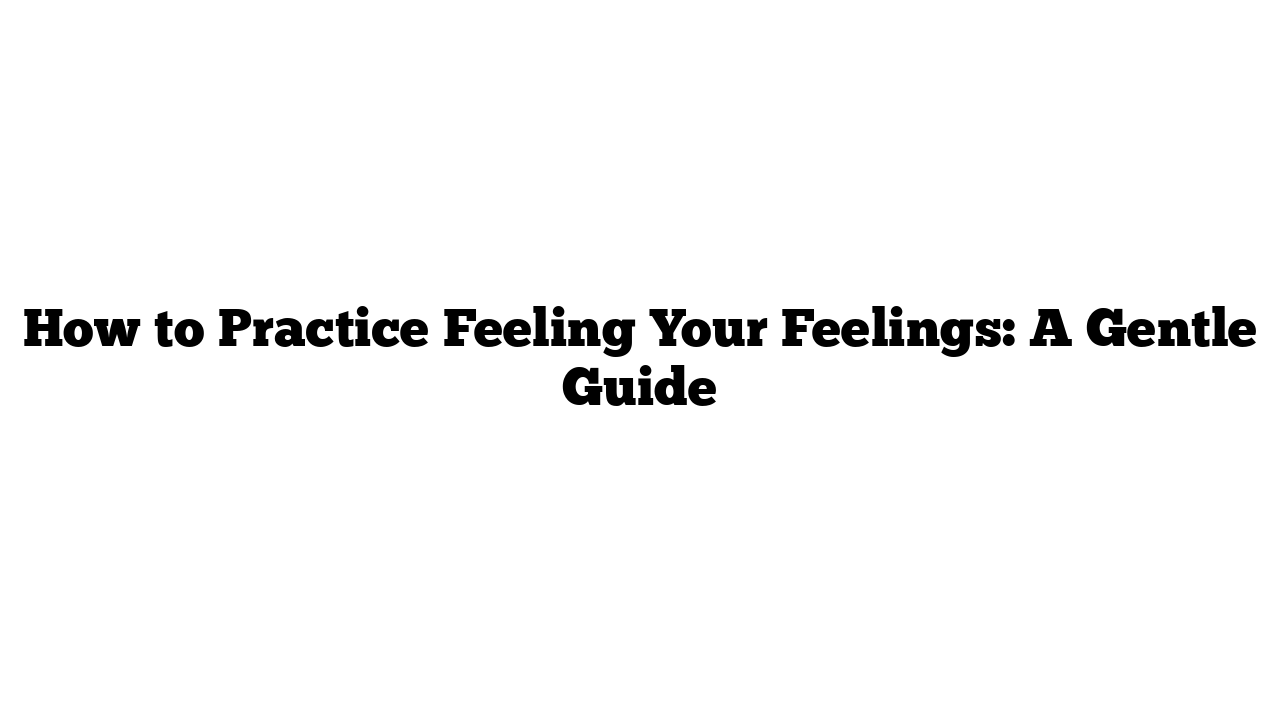Emotions are important. They tell us how we feel about the world around us. Feelings like anger, fear, sadness, happiness, hope, and peace are just a few examples of the many emotions we can experience. Understanding these feelings is essential for our well-being. This guide will help you practice feeling your feelings in a safe and supportive way.
Understanding Your Feelings
Feelings are messages from your mind and body. They are not right or wrong; they simply exist. It’s important to take a moment to listen to what your feelings are trying to tell you.
Choosing the Right Feeling
Start by selecting a feeling that is moderate in intensity. Aim for something that feels like a 5 out of 10 instead of a 10 out of 10. This way, it’s easier to explore without becoming overwhelmed.
Grounding Yourself in the Present
- Be Present: Allow yourself to focus on the here and now. Try to tune out any distractions in your surroundings.
- Feel Your Body: Notice how your body makes contact with the furniture or the floor. Remember that the ground is stable and supportive. Feel your breath—let it flow naturally.
Checking In With Yourself
Now, take a moment to check in with yourself.
- How do you feel right now?
- What sensations do you notice in your body?
It’s common to experience many feelings at once. See if you can name a few of them. If you can’t identify one right away, that’s perfectly okay.
Focusing on One Feeling
Choose one feeling to explore further.
- Locate the Feeling: Notice where this feeling is in your body. It might be in one area or spread throughout. Simply acknowledge its presence.
- Describe the Sensation: What does this feeling feel like? Is it tight, heavy, light, or tingly? If it helps, touch the area of your body where you feel this sensation.
Breathing Into Your Feelings
Instead of pushing the sensation away, try this:
- Breathe into It: Envision your breath flowing into the area where you feel the sensation. Allow yourself to truly feel it. This might lead to crying, smiling, or even laughing—whatever comes is okay.
- Stay Focused: Keep breathing and focusing on your breath. You can place your hand on your heart or leg to help ground you.
- Reconnect with the Ground: If you feel overwhelmed, bring your attention back to where your body makes contact with the ground. This can help you feel more stable.
Observing Changes
As you continue to breathe and focus on your feelings, you may notice your mind wandering. That’s perfectly normal. Gently bring your awareness back to your body sensations and breathing.
- Notice Shifts: Perhaps another feeling becomes more intense or you recognize multiple feelings at once. Allow all of them to be there. Observe what they feel like in your body.
- Practice Curiosity: Let each feeling stay for a moment. Be curious about it and breathe into it. Notice if there are any changes in your sensations—maybe the feeling has shifted or changed slightly.
Staying Present
Remember, you won’t feel this way forever, no matter what you are experiencing in this moment. Try to focus your energy on being with your feelings instead of pushing them away.
- Notice and Breathe: Keep repeating: Notice and breathe. Inhale deeply, feeling the breath fill your body. Exhale fully, letting go of any tension.
Returning to the Present
When you feel ready, slowly bring your focus back to your surroundings.
- Notice Your Environment: Identify five things you can see, four things you can hear, three things you can touch, two things you can smell, and one thing you can taste. This can help you reconnect with the present moment.
Regular Check-Ins
You did it! You just practiced feeling your feelings. You can do this exercise whenever you feel emotional or strongly about something. It’s also helpful to check in with yourself regularly to see if you’ve been ignoring any feelings.
If you find this practice difficult, that’s completely okay. Many people struggle to identify and sit with their feelings. With time, practice, and kindness towards yourself, it will get easier.
Expanding Your Practice
Want to dive deeper into your feelings? You might play this guide again without looking at the screen. You could also pause at any moment to take as long as you need.
If you ever feel overwhelmed by intense emotions, consider seeking additional resources, such as videos on managing feelings and racing thoughts.
Feeling your feelings is an important skill that can enhance your emotional well-being and understanding of yourself. Remember, it’s okay to take your time. Your feelings matter, and so do you.
